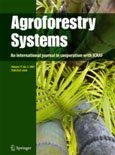There are serious shortcomings in the supply and use of information needed for policy making in the forestry sectors of developing countries (and often also in developed countries). The main weakness is the failure to connect supply to demand. Much information has been gathered not because it was needed but because donors were willing to fund inventories, on traditional lines, that were vaguely thought to be potentially useful. Information is usually inadequate on topics such as actual removals of wood and other products, or the usefulness of the forests, especially to the local people. Not enough provision is made for continuous inventories to the necessarily high standards that are needed to measure change. The way in which remote sensing has been used has often been heavily influenced by the facilities that are on offer, rather than the potential usefulness of the results. It is suggested, for example, that the resources would be better used on the assessment of changes in land use and forest cover than on elaborate cartography. A key proposal is to set up national ‘Analysis Units' that will collate and interpret available information, help users to define their needs, and make the link with suppliers, so that information gathering can be more driven by demand. Information at international level depends on what is available nationally, and therefore improvement should be sought mainly at national level.
Download:
DOI:
https://doi.org/10.17528/cifor/001082
Altmetric score:
Dimensions Citation Count:

























